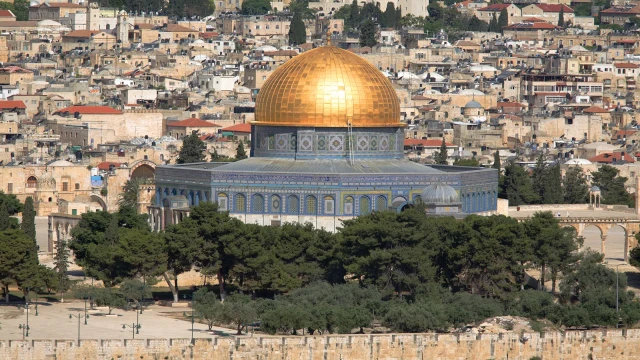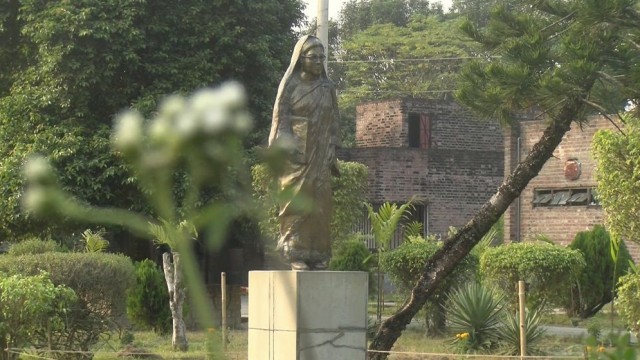Dhaka, Mar 27 (V7N) - The year 661 CE marked a watershed moment in Islamic history with the establishment of the Umayyad Caliphate, representing the first transition from the consultative Rashidun Caliphate to hereditary dynastic rule. This transformation fundamentally altered the political landscape of the Islamic world, introducing new systems of governance while preserving and expanding the territorial gains of early Islam. The Umayyad era (661-750 CE) witnessed both remarkable achievements in administration and expansion, as well as significant challenges that would shape the future of the Muslim world for centuries to come. This period represents a crucial phase in Islamic civilization where the young Muslim community transformed from a religious movement centered in Arabia to a world empire spanning three continents.
The origins of the Umayyad Caliphate emerged from the turbulent period following the assassination of Caliph Uthman ibn Affan (RA) in 656 CE. The subsequent civil war, known as the First Fitna, created deep divisions within the Muslim community that would have lasting consequences. After the martyrdom of Caliph Ali ibn Abi Talib (RA) in 661 CE, his son Hasan (RA) demonstrated remarkable political wisdom by choosing to step aside in favor of Mu'awiya ibn Abi Sufyan (RA) to prevent further bloodshed among Muslims. This peaceful transition, though controversial, allowed Mu'awiya to consolidate power and establish Damascus as the new capital of the Islamic empire. The move from Medina to Damascus represented more than just a geographical shift - it symbolized the transition from a purely Arabian Islamic state to a more cosmopolitan empire. Damascus offered strategic advantages with its established administrative infrastructure, developed urban centers, and central location that facilitated more effective governance of the expanding territories.
Mu'awiya's reign (661-680 CE) introduced several groundbreaking political innovations that would define the Umayyad era and set precedents for subsequent Islamic dynasties. Most significantly, he instituted the principle of hereditary succession by appointing his son Yazid as his heir - a radical departure from the previous system of shura (consultation) that had characterized the Rashidun period. This decision, while ensuring political stability in the short term by preventing succession disputes, created lasting tensions within the Muslim community and established a pattern of dynastic rule that would characterize most later Islamic states. The Umayyads developed a sophisticated bureaucracy that represented a fusion of existing administrative practices from the Byzantine and Persian empires they had conquered with new Islamic principles. They established specialized government departments (diwans) for finance, correspondence, and military administration, creating a more professionalized state apparatus. The standardization of Arabic as the official language of administration helped unify the diverse regions of the empire while also facilitating the Arabization of conquered territories. Perhaps most impressive was their creation of an efficient postal and intelligence network (barid) that connected the far-flung provinces of the empire, allowing for relatively rapid communication across vast distances.
The territorial expansion under the Umayyads was nothing short of extraordinary, representing one of the most rapid military expansions in world history. Building on the conquests of the Rashidun period, Umayyad military campaigns pushed the boundaries of Islam westward across the length of North Africa. By 711 CE, under the leadership of Tariq ibn Ziyad, Muslim forces had crossed into Europe, establishing a foothold in Spain (Al-Andalus) that would last for nearly eight centuries. In the east, Umayyad armies reached the Indus River valley, bringing much of modern-day Pakistan under Islamic rule. Northern advances brought Transoxiana and parts of Central Asia under Muslim control, extending the caliphate's borders to the edges of China. These conquests were not merely military achievements but also facilitated unprecedented cultural and economic exchanges across three continents. The Umayyad period saw the development of distinctive Islamic art and architecture that synthesized elements from various conquered civilizations while establishing new Islamic aesthetic principles. The construction of the Dome of the Rock in Jerusalem (completed 691 CE) stands as one of the earliest surviving examples of Islamic architecture and represents a powerful symbolic statement of Islam's presence in this sacred city. The Great Mosque of Damascus, built on the site of a Christian church, similarly demonstrated the Umayyads' ability to appropriate and transform architectural traditions while creating distinctly Islamic spaces.
However, Umayyad rule faced persistent opposition from various quarters that ultimately contributed to their downfall. The tragic events at Karbala in 680 CE, where Husayn ibn Ali (RA) and his small band of companions were martyred by Yazid's forces, crystallized the emerging Shia opposition to Umayyad legitimacy and created a lasting schism in the Muslim community. Administrative policies that favored Arab Muslims over non-Arab converts (mawali) in matters of taxation and governance created growing resentment in newly conquered territories, particularly in Persia where local populations felt marginalized despite their conversion to Islam. The Umayyads' increasingly lavish court life and perceived departure from simple Islamic values alienated religious scholars and pious Muslims. These tensions, combined with rivalries among various Arab tribal factions, created a volatile political environment that the Abbasids successfully exploited in their revolution that toppled the Umayyads in 750 CE. The massacre of nearly the entire Umayyad family at a banquet hosted by the Abbasids marked a brutal end to the dynasty, though one branch managed to escape to Spain where they established the independent Umayyad Emirate of Cordoba.
The cultural legacy of the Umayyad Caliphate proved enduring despite its political downfall. Their administrative systems and bureaucratic practices formed the foundation for subsequent Islamic states, including the Abbasids who largely maintained the governmental structures they inherited. The architectural innovations developed under the Umayyads, particularly in mosque design and royal palaces, influenced building traditions across the Muslim world for centuries. In Spain, the surviving Umayyad branch established what would become the glorious Caliphate of Cordoba, which preserved and developed Umayyad cultural traditions while creating one of the most sophisticated civilizations of medieval Europe. The Great Mosque of Cordoba, with its iconic horseshoe arches and intricate mosaics, stands as a testament to this enduring legacy. The Umayyad period also saw the beginnings of Islamic art traditions, particularly in calligraphy, decorative arts, and coinage, where they established patterns that would characterize Islamic material culture for generations. Perhaps most significantly, the Umayyad era witnessed the development of a distinct Arab-Islamic cultural identity that successfully synthesized Arabian, Byzantine, Persian, and other regional influences into a new civilization.
The transition to Umayyad rule represented both continuity and change in Islamic governance. While maintaining the basic religious and legal structures of the caliphate, the Umayyads introduced monarchical elements that would characterize later Muslim dynasties. Their nearly century-long rule demonstrated both the possibilities and challenges of governing a rapidly expanding, multi-ethnic empire that stretched from the Atlantic to the Indus. The Umayyad approach to governance - pragmatic, flexible, and often willing to adapt existing systems to new needs - established patterns that would influence Islamic political thought and practice long after their demise. Their ability to maintain relative stability across such vast territories, despite numerous rebellions and challenges, testifies to their administrative capabilities and political acumen.
The religious policies of the Umayyads also merit careful consideration. While often criticized by later Islamic historians for their supposed worldliness, the Umayyads played a crucial role in defining the relationship between religious authority and political power in Islam. Their caliphs saw themselves not just as political leaders but as defenders and promoters of the faith, even if their personal piety was sometimes questioned. The Umayyad period witnessed important developments in Islamic law and religious practice as scholars began the process of systematizing Islamic jurisprudence in response to the challenges posed by governing a diverse empire. The collection and preservation of hadith (Prophetic traditions) gained momentum during this period, laying groundwork for the great compilations that would emerge under the Abbasids.
Economically, the Umayyad period saw the consolidation of an Islamic monetary system with the introduction of distinctly Islamic coinage that replaced Byzantine and Persian currencies. Their tax system, though controversial in its treatment of non-Arab Muslims, established patterns of revenue collection that would endure for centuries. The agricultural development of conquered lands, particularly in Syria and Iraq, contributed to economic prosperity and supported the growing urban centers that became hubs of Islamic civilization. Trade networks expanded dramatically under Umayyad rule, connecting the Mediterranean world with South Asia and beyond, facilitating not just commercial exchange but also the transmission of ideas and technologies.
The military organization of the Umayyad state represents another important aspect of their legacy. Building on the early Islamic armies, they developed more professional military structures with standing armies stationed in garrison towns (amsar) across the empire. The reliance on Syrian troops as the core of their military power, while effective in maintaining control, contributed to regional tensions that would eventually undermine the dynasty. Their naval capabilities, particularly in Mediterranean warfare against the Byzantines, marked an important development in Islamic military history.
The Umayyad era serves as a crucial bridge between the early Islamic community and the more cosmopolitan empires that followed, leaving an indelible mark on Islamic civilization that continues to be studied and debated by historians today. Their achievements in state-building, their challenges in maintaining unity, and their complex legacy in Islamic memory all contribute to our understanding of how the early Muslim community navigated the transition from a revolutionary movement to an established world power. While later Abbasid propaganda often portrayed them negatively, modern historians recognize the Umayyads as foundational figures who established many of the institutions and patterns that would characterize Islamic civilization for centuries to come. Their story remains essential for understanding the development of Islamic political thought, the challenges of religious authority in an expanding empire, and the complex interplay between Arab identity and Islamic universalism in the formative centuries of Muslim history.
END/RH/































Comment: